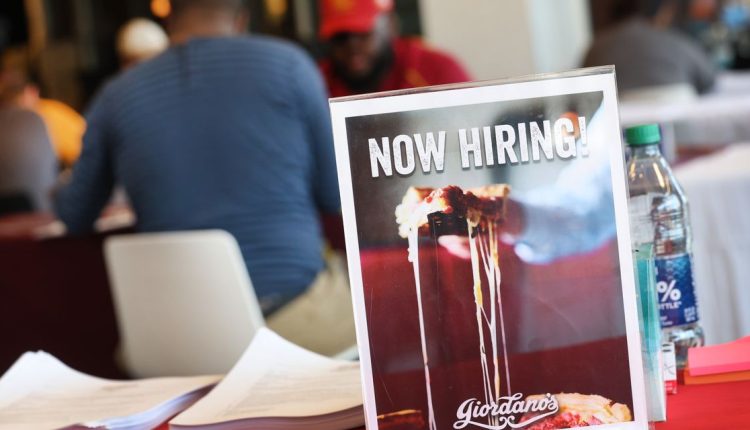Financial markets took Thursday’s inflation update from the Federal Reserve’s favorite indicator largely in stride, turning their attention to Friday’s nonfarm payroll report in hopes of finding further signs of a labor-market slowdown.
With economists expecting job gains to slow to 170,000 in August from 187,000 in the prior month, an actual number below that estimate has the potential to tilt arguments in favor of a soft landing, to further lower the market-implied chances of another Fed rate hike this year and to extend the recent streak of gains in stocks.
Read: Hiring likely slowed again last month, but watch out for surprises in U.S. August jobs report
Data released earlier this week demonstrates how much is riding on labor-market conditions right now. On Tuesday, stock investors cheered reports that showed job openings fell to a 28-month low of 8.8 million in July and consumer confidence dipped in August. Then Wednesday’s private-sector payrolls report from the firm ADP reflected a lower-than-expected 177,000 jobs gained in August. Both days worth of data prompted fed funds futures traders to reduce the likelihood of further Fed rate hikes this year, while sending all three major stock indexes higher and Treasury yields to their lowest levels in about three weeks.
“Bad news on the economy is still being treated as good news (for now), since optimism about fewer rate hikes is outweighing the prospects of slower growth,” said Deutsche Bank strategists Jim Reid, Henry Allen, and others.
“All eyes are now on tomorrow’s U.S. jobs report,” they said in a note. “Our U.S. economists are expecting nonfarm payrolls to slow down further to 150k, and yesterday we had some further evidence of a softening labor market from the ADP’s report of private payroll.”
While ADP’s private-sector payrolls report isn’t always seen as an accurate predictor of how the official nonfarm payrolls data will come in, it’s one piece of underwhelming information that’s setting the tone for Friday’s official jobs figures. At BMO Capital Markets, rates strategist Ben Jeffery said ADP’s data is one of seven “negative proxies” within the labor market that are pointing “decidedly to the downside” ahead of August’s nonfarm payrolls report.
“The setup for NFP [nonfarm payrolls] unquestionably leaves the true shock an upside surprise,” Jeffery wrote in a note on Thursday. “Nonetheless, given what’s been a resilient labor market and the Fed’s consistent messaging that a single month’s data does not a trend make, even an expected slowest pace of hiring since December 2020 would not be enough to take another hike this year off the table.”
Instead, “we expect more evidence of monetary policy’s lagged influence would serve to reinforce the FOMC’s prioritization of flexibility to allow more data to inform the next step (or not) in the direction of fed funds,” Jeffery said, referring to the policy-setting Federal Open Market Committee.
In addition to the estimated 170,000 job gains for August forecast by economists polled by The Wall Street Journal, average hourly wages are expected to rise 0.3% for the month and the unemployment rate is seen as edging down to 3.5%, leaving it near the lowest levels since the 1960s.
As of Thursday morning, all three major stock indexes
DJIA
SPX
COMP
were higher after core readings from the July personal consumption expenditures index came in as expected. Meanwhile, 1-year
BX:TMUBMUSD01Y
through 30-year Treasury yields
BX:TMUBMUSD30Y
were either little changed or slightly lower, with the PCE data failing to move the needle for fixed-income investors.
Read the full article here

